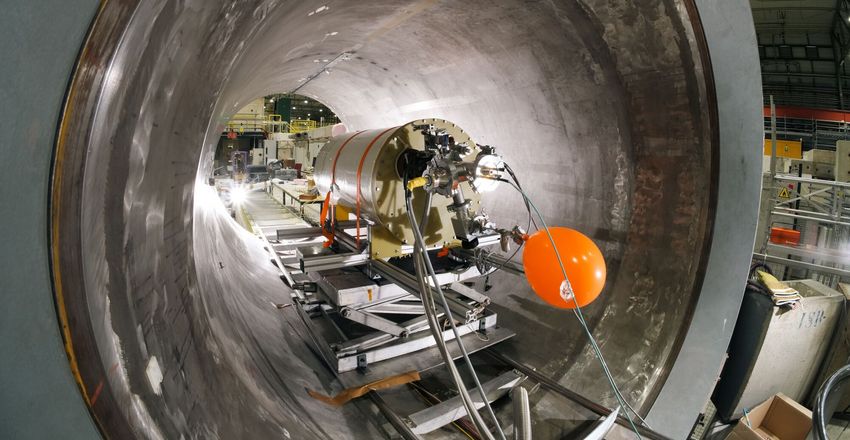The aim of the experiment is to discover potential dark matter particles, known as axions. Models of theoretical particle physics state that axions with a certain mass were formed after the inflation phase, when the universe expanded massively in a very short time. MADMAX is an international collaboration of scientists from various research institutions.
MADMAX is to be installed in one of the underground experimental halls of the former HERA tunnel at DESY, where it will detect axions in a strong magnetic field by means of a telltale electromagnetic signal. The feasibility of the experiment will be tested and demonstrated with several prototypes and tests in various research laboratories.
Axions give themselves away through microwaves
MADMAX uses the principle that certain particles have the ability to take on the properties of other particles. In a static and strong magnetic field, an axion behaves a little like a photon and develops a small electric field. If scientists could detect this electric field, they would confirm the existence of axions as dark matter. However, this is not as easy as it sounds, because any signal would be too weak by far for even the most sensitive detectors.
The researchers are therefore pursuing the idea of amplifying the signal by placing many carefully placed dielectric disks in the axion's path. This creates microwaves. These waves can be combined, reflected and thus amplified. In recent months, the MADMAX collaboration has put the experimental principle, the detector and the magnet to the test.
Testing various prototypes
The MADMAX collaboration presented its first results at the 97th DESY Physics Review Committee (PRC). Since the last review, the team has conducted experiments with three prototypes that differ in complexity and increasing size, and provided convincing answers to all of the review committee's key questions.
The researchers used a prototype with three disks and a diameter of ten centimeters in a cryostat in a 1.6 Telsa magnet at CERN. In so doing, they demonstrated that they are able to calibrate and operate detectors at a temperature of around -269 degrees Celsius. They also tested a prototype with three disks of 20 centimeters in diameter, in which the disk spacing in the magnet can be adjusted. This allowed them to check whether the frequency of the signal could be tuned as planned.
Initial physics results: Mass range for axions excluded
They have also collected initial data on potential axion-like particles, which is currently being analyzed. Finally, they used a prototype with three disks of 30 centimeters in diameter in the SHELL experimental laboratory (Shielded Experimental Laboratory) at the University of Hamburg and have already been able to set dark photon limits in the mass range around 80 microelectron volts. In other words, they have not discovered any axions, but they now know where to stop looking.
The next challenge for MADMAX is to have a 9 Tesla large dipole magnet made to increase the area of the detector and thus its sensitivity for axion detection. To facilitate this task, the Max Planck Society has provided substantial funding for the production and testing of a demonstration magnet.
If the funds are available, the magnet will be built and tested from 2027. The MADMAX scientists hope to be able to record the first data with a fully-fledged experiment in 2032, with a planned runtime until 2039.
(*) MADMAX: MAgnetized Disc and Mirror Axion eXperiment
